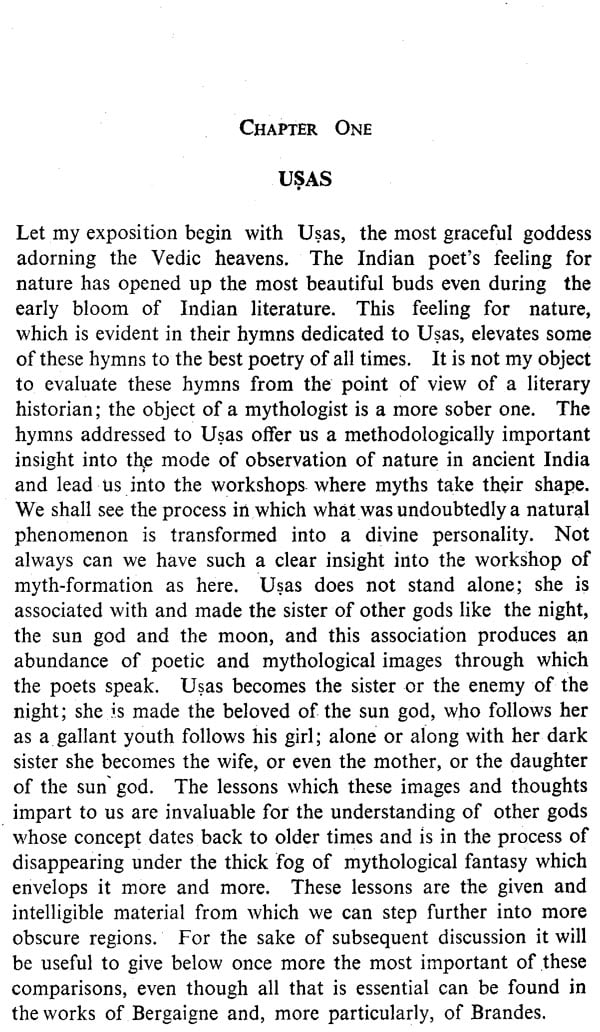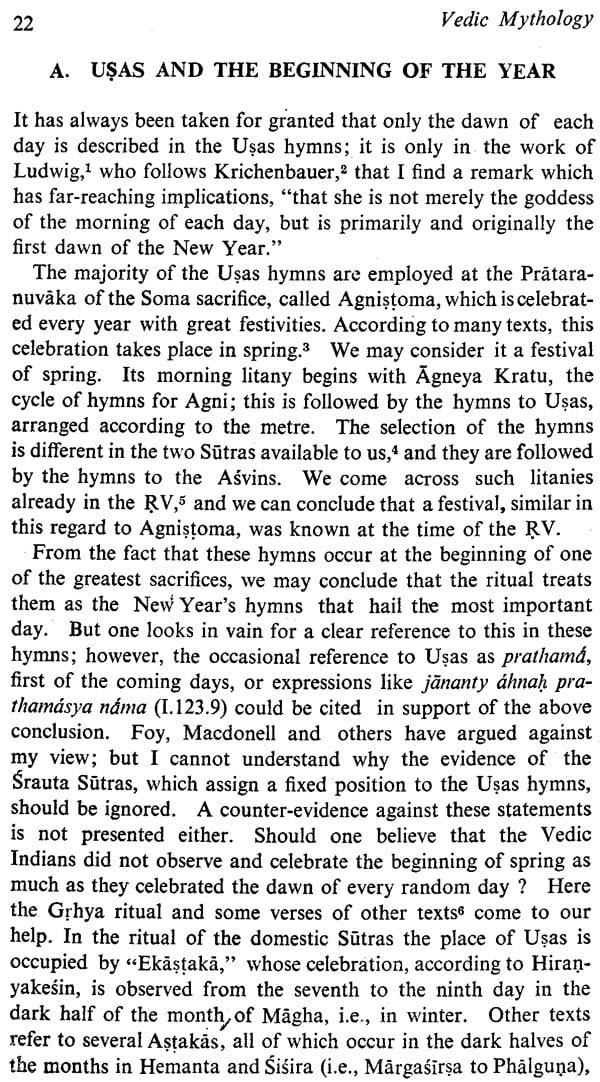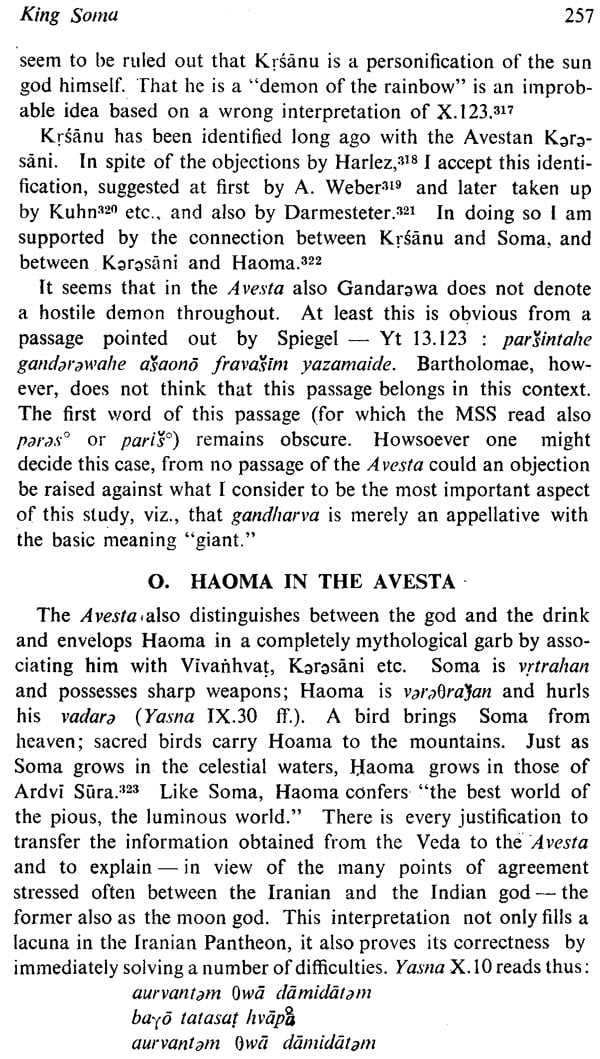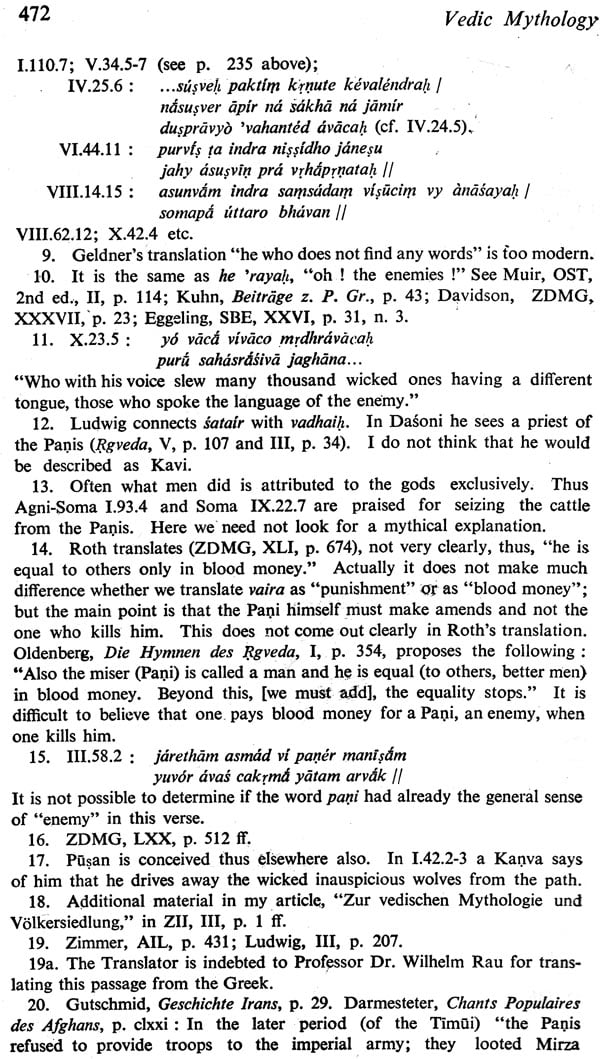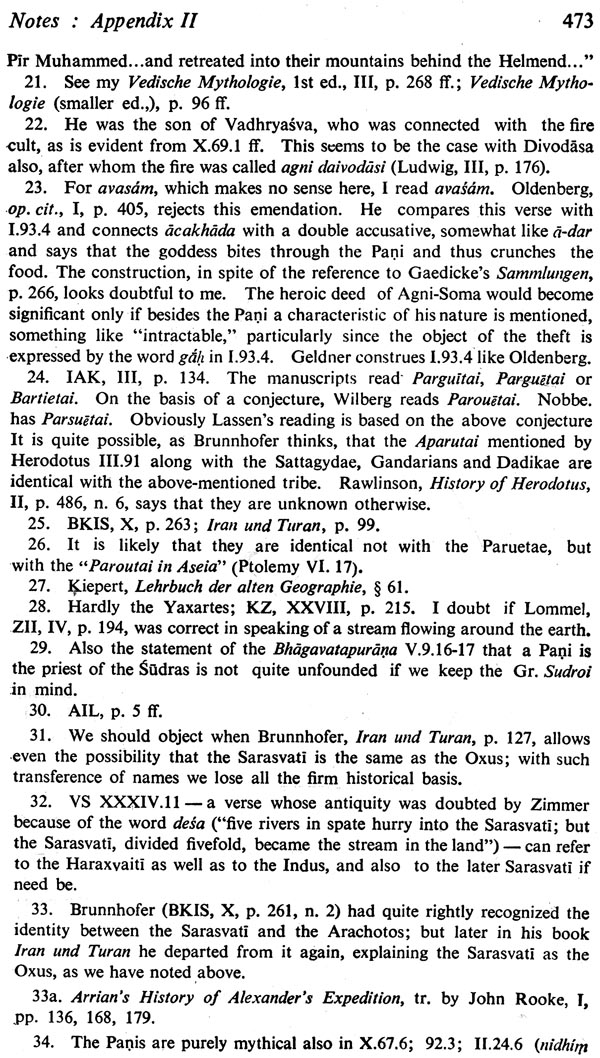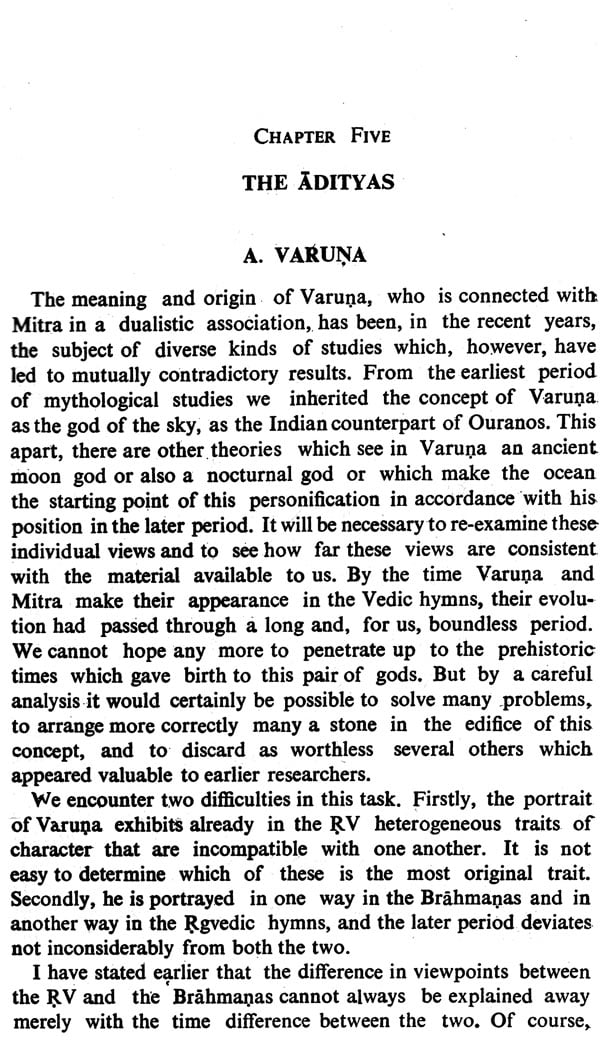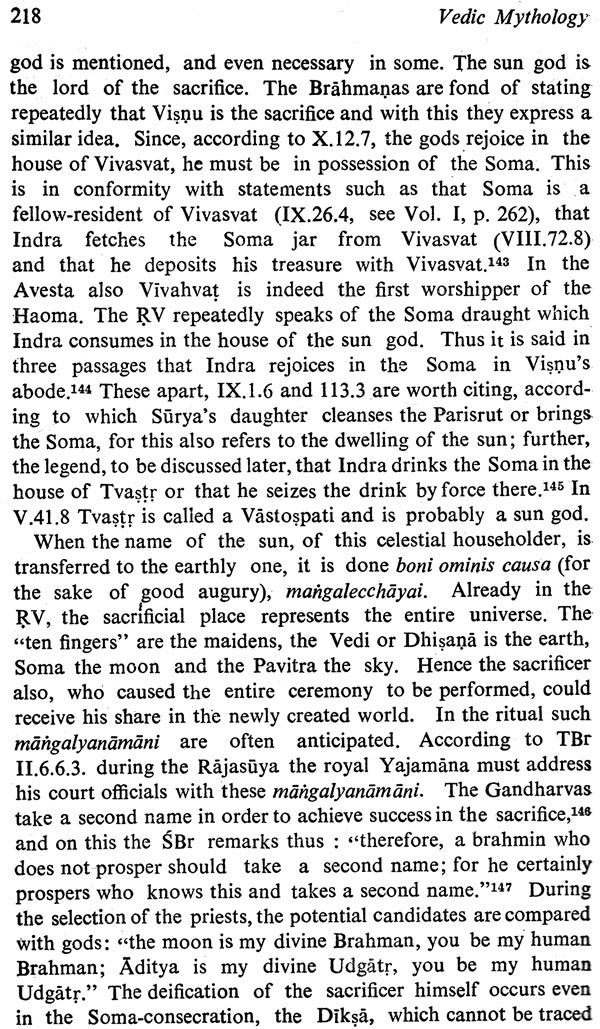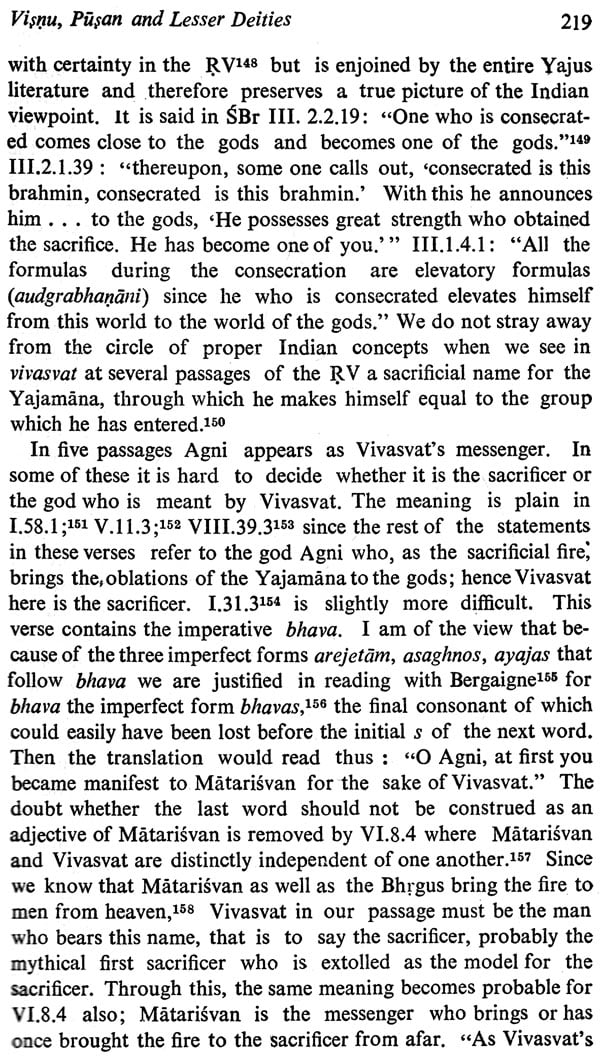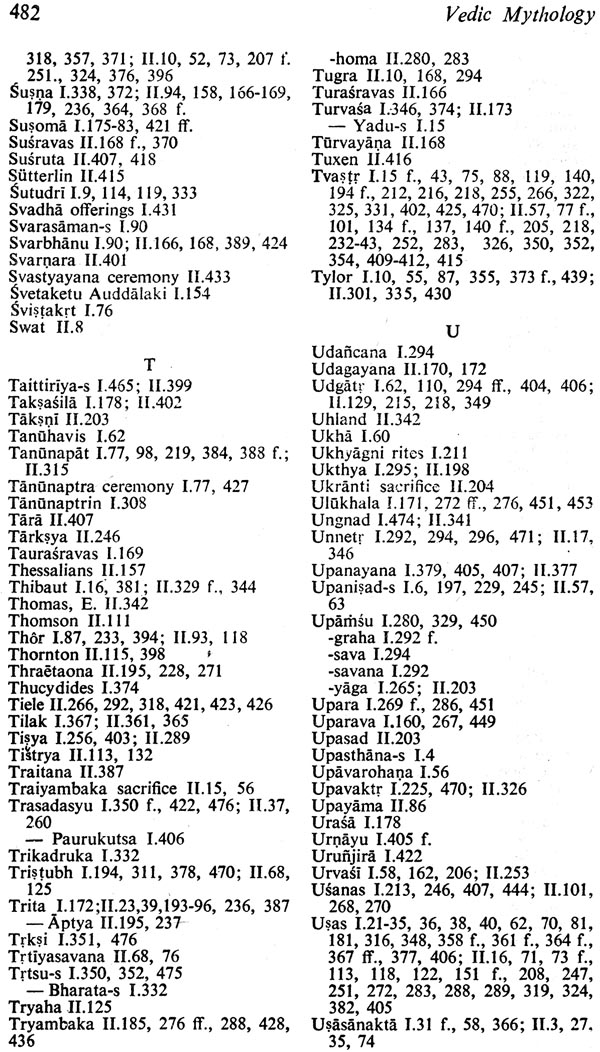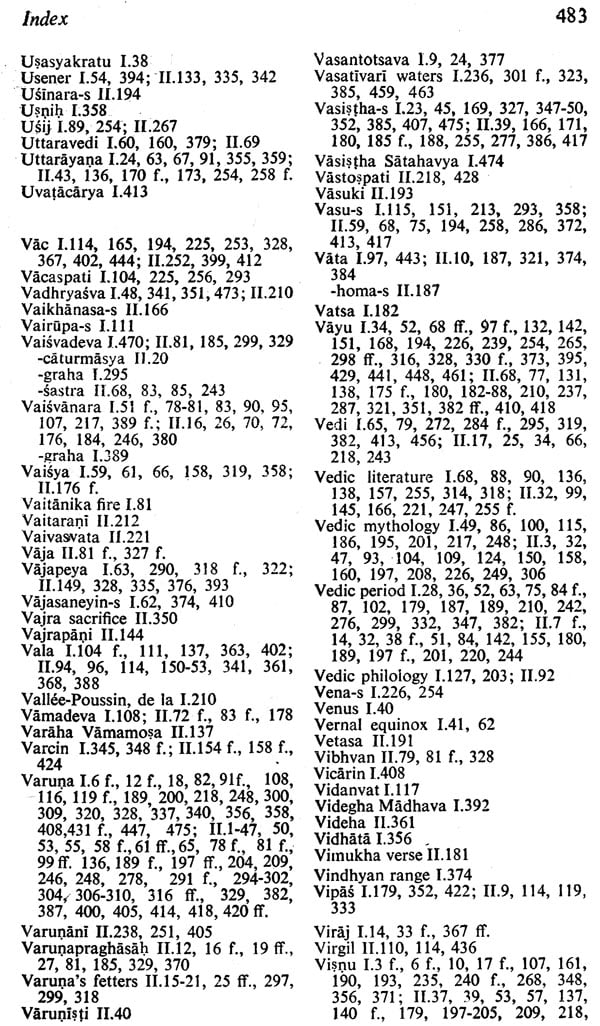
Vedic Mythology (Set of 2 Volumes)
Book Specification
| Item Code: | NAB483 |
| Author: | Alfred Hillebrandt |
| Publisher: | MOTILAL BANARSIDASS PUBLISHERS PVT. LTD. |
| Language: | English |
| Edition: | 2016 |
| ISBN: | 9788120808010 |
| Pages: | 983 |
| Cover: | Hardcover |
| Other Details | 9.0 inch X 6.0 inch |
| Weight | 1.40 kg |
Book Description
Alfred Hillerbrandt's Vedische Mythologie, together with his Ritual-Literature: Vedische Opfer und Zauber, forms a pioneering contribution to Vedic studies. Vedische Mythologie originally appeared in three volumes in 1891, 1899 and 1902. In 1910 Hillebrandt had also brought out a shorter version entitled Vedische Mythologie, Kleine Ausgabe. Subsequently he thorough revised the original edition, rewriting some parts quite afresh, and arranged the material in two volumes, the first of which was published in 1927 and the second posthumously in 1929. The present English translation is of this second revised edition. Following the method of philological exegesis and shunning unsubstantiated theories, Hillebrandt analyses and interprets here the concepts of Vedic gods.
Volume I contains a long introduction where he lays down his methodology and principles of interpretation. Then follow four chapters dealing respectively with Usas, Asvins, Agni and Soma. The chapter on Soma occupies more than half of the volume, expounding his major thesis that Soma denoted the moon throughout the Rgveda. There is an extensive appendix on the preparation and offering of the Soma drink according to the Srauta Sutras and another appendix on the tribe of the Panis.
Volume II discusses the various classes of gods. It has six chapters dealing respectively with the Adityas; Savitr and the Rbhus; Indra and the Maruts, Visnu, Pusan and lesser deities; Manes, Demons and Asuras; and Rudra. The second volume also contains a concordance of all the translated passages, a general bibliography, a bibliography of Hillebrandt's writing on the Veda and a detailed index.
About the Author:
ALFRED HILLEBRANDT was born on 15th March 1853, in Grossnaedlitz near Breslau. He began his Sanskrit studies under A.F. Stenzler at the University of Breslau. He continued his education at the University of Munich, where he became the chief pupil of Martin Haug, the great Avestan scholar, from whom he inherited his deep interest in Vedic ritual and mythology. In 1875 he earned the degree of Dr. Phil. From the University of Munich for his thesis on the Goddess Aditi, and two years later the University of Breslau awarded him the degree of Dr. Habil. For his dissertation on Varuna and Mitra. Hillebrandt joined the University of Breslau in 1883 as Associate Professor of Sanskrit and in 1887 he succeeded his teacher Stenzler as full Professor. He was also Vice-Chancellor of his University twice. His more than two hundred articles, reviews and books deal with a vast range of subjects like Veda, Avesta, Srauta Sutras, Sanskrit Drama, Poetry, Grammar, Arthasastra, Indian History, University Administration and Curriculum. The last major work he completed just before his death in 1927 was the revision of the Vedische Mythologie.
SREERAMULA RAJESWARA SARMA studied at Visva Bharati, Santiniketan, and Philipps University, Marburg. He taught at Kashi Vidyapith and Benares Hindu University, before joining Aligarh Muslim University, where he teaches in the Department of Sanskrit. His main interests are Sanskrit/Prakrit texts on exact sciences. Recent publications include Thakkura Pheru's Rayanaparikkha: A Medieval Prakrit Text on Gemmology, and Yantraprakara of Sawai Jai Singh, a manual on astronomical instrument.
ACKNOWLEDGEMENTS
ABBREVIATIONS
INTRODUCTION
CHAPTER ONE: USAS
- Usas and the Beginning of the Year
- Usas and the Manes
- The Three Usas
- Usas and the Cattle
- Usas and the Sun
- Surya
- The Sun destroys Usas
- Usas and the Night
- Sarama
- Viraj
- Usas and Prajapati
CHAPTER TWO: THE ASVINS
CHAPTER THREE: AGNI
- The Production of the Fire
1. The two Aranis- In the Ritual
- In the Rgveda
- The Time of Installing the Fire
- The Mainenance of the Fire
- The Three Fires in the Ritual
The three Gharmas or Mahimans - The Three Fires in the Rgveda
1. The Daksina Fire in the Rgveda- Narasansa
- Kavyavahana
- Tanunapat
- The Subhya Fire and the Avasathya Fire
Sacra Publica - Agni and the Lightning
- The Gods and Agni
- The Gods install Agni
- The Gods and the Sun
- Agni's Flight
- Agni's Hiding Place
- In the Waters
- In the Vegetation
- Matarisvan
- Brhaspati
- Some Clans belonging to the Fire Cult
- The Angiras
- Bhrgu
- Atharvan
CHAPTER FOUR: SOMA
Part I: The Soma Plant
- Characteristics of the Soma Plant
1. Soma has hanging Branches
2. Soma has bright-coloured Branches- aruna, bright-red, bright-coloured
- babhru, red-brown, brown
- hari, golden
- The Colour of the Soma Cow
- parvan, parus, joint, stalk
- ansu, shoot, stalk
- ksip, finger
- vaksana, tube
- vana, reed, cane
- uparuh, young shoot
- andhas, plant, drink
- The Bark of the Soma Plant
- Does the Soma Stalk have Edges?
- Some Statements of the Brahmanas
5. Soma's supposed Relationship with other Plants - The Buying of Soma
- The Soma Drink
- The Antithesis between the Soma Pressers and the Asunvats
- Samsava, the Competition among the Sacrificers
- Was Soma still a popular Drink at the Time of the Rgveda?
- Prototypes of the Sacrificer and the Evolution of a Soma-Aristocracy
- Ancient Settlements of the Soma Pressers
- The Effect of the Drink
- Celestial Origin of the Soma Plant
- The Moon and the Drink of the Gods in the Later Literature
- The Moon and the Drink of the Gods in the Rgveda
- Soma and Light
- Soma and Dawn
- Soma causes the Sun to shine
- Constellations and Luminous Spaces
- Soma as Bird
- Soma as Child
- Soma as the Support of the Sky
- Soma as King
- Indu and other related Designations for the moon in the Rgveda
- drapsa
- urmi
- utsa
- samudra
- mada
- urjam pati, svadhavat etc.
- kosa
- Agni Somagopa
- More on Soma
- Soma Tigmasrnga
- The Weapons of Soma
- Soma Stanayad and related expressions
- Vacaspati
- Soma Marutvat
- Soma and the Waters
- Apam napat
- Sarasvat
- Why is the moon called Pavamana?
- Soma Giristha
- Soma Osadhipati
- Soma Triprstha
- Soma and the Manes
- Kavi Soma
- Soma and Gandharva
- Haoma in the Avesta
- Comparisons
- Astronomical Relationship
- New Moon
- Full Moon
- Acarya and Brahmacarin
- Soma and the Daughter of Surya
- Agni-Soma
- Apparatus for Pressing
- In the Ritual
- In the Rgveda
- The Stones
- The Mortar
Camu
Dhisana - The Cowhide
- On Some Soma Vessels in the Rgveda
- Kosa and Kalasa
- Dru
- Drona
- Vana
- Sruva, ladle
- The Swelling of Soma
- Extraction and Purification
- In the Ritual
- In the Rgveda
- Pure Unmixed Soma Juice
- Admixtures to the Soma Juice
- Mixing with Water
- Mixing with Milk
- Yavasir
- Admixture of Butter
- Food offered with the Soma Drink
- Soma Tivra
- Rjisa, Rjisin
- Soma Tiroahnya
- Soma, Madhu and Sura
- The Asvins and Honey
- Honey in the Srauta Ritual
- Sura
- The three Savanas
Notes
CHAPTER FIVE: THE ADITYAS
- Varuna
- Varuna and the Sky
- Ahura and Mithra
- Varuna and the Waters
- Samudra in the RV
- Samudra in the Ritual
- Varuna in the Ritual
The Sacrificial Bath - Traces of the Varuna of the Ritual in the RV
- Further Data from the Ritual
Soma and Varuna - The Moon and the Ocean
- Mitra
- Mitra-Varuna
Other Dual Associations - Varuna-Indra
- Varuna-Agni
- Agni Placates Varuna's Anger
- Agnir upanaddhah
- On RV X. 124.
- Agni = Mitra, Varuna = Soma?
- Agni and Varuna are identical
- Mitra-Varuna
- Aryaman
- Aryaman's Path
- Aryaman and the Marriage Ceremony
- God Aryaman
- Aryaman as the Name of the Suitor
- Aryaman in the Avesta
- The Remaining Adityas and Aditi
- Bhaga
- Daksa and Amsa
- The Number of the Adityas
- The Adityas and the Amesaspentas
- Aditi
CHAPTER SIX: SAVITR AND THE RBHUS
- Savitr
- Savitr in the Ritual
- Savitr in the Rgveda
- Savitr and the Gods
- Savitr as Appellative
- The Rbhus
- The Number of the Rbhus
- Indra and the Rbhus
- The Meaning of the Rbhus
- The Rbhus in the Ritual
- In the Agnistoma
- In the Dvadasaha
- The Rtus in the Ritual
- The Name of the Rbhus
CHAPTER SEVEN: INDRA AND THE MARUTS
- Indra and Vrtra
- Vrtra
- Phraseology of the RV
- The later Poets of India on Vrtra
- Vrtra and the Parvata
- Vrtra and his Season
- The Origin of the Vedic Imagery
- Vrtra and the Rivers of India
- Vrtra and the Explanation of Indra
- Objections against my Interpretation
- More from the Vrtra Saga
- Indra in the Ritual
- The Agnistoma
- Other Soma Sacrifices
- Sacrifices connected with Agriculture
- Other Sacrifices
- Indra's Epithets
- The Evolution of Indra and Vrtra in the later Periods
- In the Brahmanas
- Indra and Visvarupa
- Indra and Vrtra
- Agni and Soma in the Battle against Vrtra
- Other Succourers of Indra
- The Consequences of Vrtra's Death
- In the Mahabharata etc.
- Indra's Transformation
- In the Brahmanas
- Namuci
- Vala
- Other Exploits of Indra
- Dasa
- Etasa
- Indra and Kutsa
- Susna
- Indragni
- The Maruts or the Rudras
- Prsni
- The "Host" of the Maruts
- The Maruts and the Asvattha
- The Maruts in the Family Books
- The Maruts as the Manes
- The Maruts in the Cult
- Vayu
- Parjanya, Apah and other related minor Gods
- Apah
- Aphi Budhnya
- Trita
CHAPTER EIGHT: VISNU, PUSAN AND LESSER DEITIES
- Visnu
- Visnu mythology in the RV
- Visnu in the Ritual
- Pusan and the Sarasvati
- Pusan and Indra
- Sarasvati
- Soma-Pusan
- Vivasvat and Yama
- Vivasvat
- Yama
- Tvastr and his Son
Visvarupa - Lesser Deities
- Trees and Plants
- Animals
- Mountains
- Professional Deities
- Abstractions
- Goddesses
CHAPTER NINE: MANES, DEMONS AND ASURAS
- Manes
- Demos
- Asuras
CHAPTER TEN: RUDRA
- Rudra in the Ritual
- Rudra and his Season
- Rudra's Weapons
- Further Data from the Ritual
- Rudra in the RV
- Rudra's Names
NOTES
CONCORDANCE OF TRANSLATED PASSAGES
GENERAL BIBLIOGRAPHY
BIBLIOGRAPHY OF HILLEBRANDT'S WORKS ON THE VEDA
INDEX
